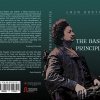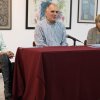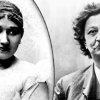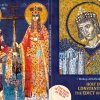The City Library “Karlo Bjelicki” of Sombor, Serbia published a book The Basic Principle (Osnovno nacelo) by Laza Kostic, the most distinguished Serbian poet, writer, philosopher, and translator. The English edition of this book was published in April of this year, while the critical edition in the original language (Serbian) was published last year, in 2015.
Laza Kostic was born in Kovilj, Serbia in 1841. He finished high school in Novi Sad and Pest (Budapest), and earned his Ph.D. at the Law School of Pest University, Austro-Hungary. He worked as a professor, journalist, and lawyer, and was later involved in political life in Serbia and Austro-Hungary. He was one of the most educated Serbian writers and polyglots - speaking seven languages (Greek, Latin, English, Russian, Hungarian, German, and French). According to many critics, he was the most important figure in the Serbian romantic poetry.
Dr. Predrag Cicovacki, Professor of Philosophy at the College of the Holy Cross in Massachusetts, initiated the republishing of the book The Basic Principle, and he translated it into English language. This is a fundamental and unique philosophy book in Serbian philosophy, and esthetics. The book was presented at the Serbian Reading Room in Sombor on October 15, 2015 by Dr. Predrag Cicovacki, Dr. Sasa Radojcic, Professor of Philosophy and Poet, and Vladimir Jerkovic, Director of the City Library of Sombor and the Serbian Reading Room. Dr. Cicovacki also delivered a lecture “Laza Kostic: Polyglot, Cosmopolitan, Philosopher” in the Gallery of Contemporary Arts of the City Museum of Sombor, during the exhibition dedicated to Laza Kostic “Legacy of Laza Kostic Homeland Collection – Fine Arts of the City Museum of Sombor.”According to Dr. Cicovacki, in the book The Basic Principle Kostic is mocking traditional philosophers from Ancient Greece to Kant and Hegel because they are “too serious” i.e., they are so intellectually engrossed into abstract ideas and detached from real life, that they would not be able to choose between two equally big piles of hay like Buridan’s famous donkey who allegedly starved to death (12, 14) [“This is the situation of famed Buridan’s Ass, named after philosopher John Buridan (1300-1358): a donkey finds himself halfway between two equally big and delicious piles of hay. Because he lacks a decisive reason to choose one pile over the other, he cannot decide which one to eat, and eventually starved to death.]. They are “too serious” because their thoughts are detached from their heart. Kostic chooses the heart as the starting point of his philosophy and poetry, but not mere appearances or abstract ideas, as science and philosophy usually do.
Kostic’s book, The Basic Principle, begins with the traditional philosophical questions: What is the root of life? Who am I? What am I doing here? How do I stand in this world and how does this world stands to me? Considering such traditional philosophical questions from Ancient Greek philosophy to Kant and Hegel, Kostic found the governing source of the world and all its things and events in one basic principle – that of “intercrossing.” The inspiration for this principle Kostic found in the Ancient Greek philosophy, especially in Heraclitus. For Heraclitus, the basic principle is the unity of opposite powers (day – night, wet – dry, warm – cold, etc.). In the wake of Heraclitus’ principle, Kostic determines “intercrossing” as the relationship of encountering and resolving the opposite powers. Harmony and symmetry are the two manifestations of this basic principle of “intercrossing.” Kostic says: “Harmony is the synthesis of symmetry. Symmetry is the analysis of the harmony” (63). Symmetry and harmony are attached to each other, and they control each other. Symmetry is the balance of opposite powers. Harmony comprehends all differences in the one unique wholeness. For Kostic, from organic nature to the highest products of the human spirit such as arts and poetry, we can find harmony and symmetry in the “intercrossing” of the conflicting forces. Harmony and symmetry create a beauty. The root of Kostic’s philosophical thought and poetry is based on uniqueness of beauty, which he found most aptly illustrated in the Ancient Greek tragedy and the Serbian medieval epics.
Kostic’s fascination with beauty applied not only to his poetry, but also to his personal life. He fell in love in Lenka Dundjerski, the youngest daughter of his friend Lazar Dundjerski. He met her in 1891 when she was twenty years old. Kostic was thirty years older than she, and he was aware that their relationship could not succeed because of the age and social difference and as well as because of his relationship with the family Dundjerski. [See: “Laza Kostic.” Accessed May 31, 2016: http://srednjeskole.edukacija.rs/] Lenka was a young, attractive, and charming girl who had heard a lot about Kostic, and she had read his poetry before she met him. When Kostic met her, he was so enchanted he could not control his emotions. The rhapsody of his emotions he expressed in the first song dedicated to Lenka: “To Miss L.D.” Lenka was hoping that Kostic will propose her, but the proposal never came. Instead, Kostic wrote a letter to his friend Nikola Tesla, Serbian-American scientist and inventor, trying to get him interested in marrying Lenka. Kostic thought that Lenka and Tesla would be a good match and that his strong emotions for Lenka would then go away. However, Tesla was only interested in science and inventions because he dedicated his life to them. On the other hand, Lenka was so in love in Kostic that she wanted to marry him alone. Because Kostic could not control his emotions toward Lenka, nor could he found any better resolution for their uneasy relationship, after four years of struggle he married his former fiancé and a woman who waiting for him over two decades, Julija Palanacki. They married in Sombor in 1895, and Sombor became Kostic’s hometown for the rest of his life. Two months after his wedding to Julija, Lenka died in Vienna. Although her family stated that she died from typhus, there were many speculative stories about it. When Kostic heard about Lenka’s death, he was so depressed and struck by this tragic death that Lenka began to appear in his dreams. His longing for Lenka resulted in him writing a poem dedicated to her. Inspired by beauty of the church Santa Maria Della Salute in Venice, he wrote what turned out to become the greatest love poem in the history of Serbian language, “Santa Maria Della Salute.” He worked on this poem for the next 14 years and finished it a few months before his death. Kostic died on November 26, 1910 in Vienna. He was buried at the Great Serbian Orthodox Cemetery in Sombor.Laza Kostic’s philosophy and poetry express the uniqueness of his life and works. As Dr. Cicovacki mentioned in his Prologue, this book had been hiding for decades in the basements of various archives, and it has remained unknown even to the philosophical audience in Serbia. It had never been translated into any foreign language before, due to our fears that civilized Europeans may laugh at it. Dr. Cicovacki pointed out that we depreciate our own tradition although it contains many treasures we should be proud of - such as our magnificent Epic poetry of which the rest of the world knows almost nothing.
In order to know more and understand better Kostic’s poetry, aesthetics, and life, you should read his philosophical treatise, The Basic Principle. If you are interested in this book, you can contact Dr. Predrag Cicovacki at the College of the Holy Cross, Department of Philosophy, Worcester, MA, 01610 or e-mail to This email address is being protected from spambots. You need JavaScript enabled to view it.. He will glad to send you a free copy of this book (in English or Serbian).







